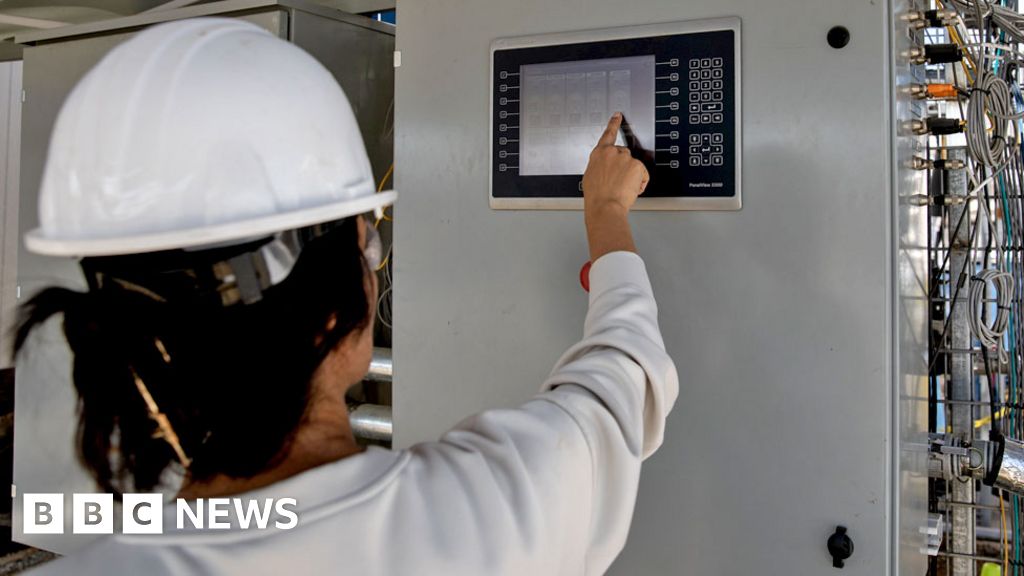
Boom times for US green energy as federal cash flows in
In February US company LanzaJet, which produces sustainable aviation fuel (SAF) from ethanol, announced that it intended to build a second, larger plant on US soil.
The Inflation Reduction Act (IRA) was a "big influence", says Jimmy Samartzis, its chief executive.
The second plant would add to its facility in Soperton, Georgia - the world's first commercial scale ethanol-to-SAF plant.
"We have a global landscape that we are pursuing…[but] we have doubled down on building here in the United States because of the tax credits in the IRA, and because of the overall support system that the US government has put in place."
Signed into law by President Biden in August 2022, the IRA, along with the so-called Bipartisan Infrastructure Law (BIL) enacted in November 2021, are intended, amongst other things, to funnel billions of federal dollars into developing clean energy.
The aim is to lower greenhouse gas emissions, and incentivise private investment, to encourage the growth of green industries and jobs: a new foundation for the US economy.
With a 10-year lifespan, and a cost originally estimated at $391bn (£310bn) but now predicted to reach, external over $1tn - the final figure is unknown - the IRA offers new and juicer tax credits, as well as loans and loan guarantees for the deployment of emissions reducing technology.
The tax credits are available to companies for either domestically producing clean energy, or domestically manufacturing the equipment needed for the energy transition, including electric vehicles (EVs) and batteries.
Consumers can also receive tax credits, for example for buying an EV or installing a heat pump. The tax credit for SAF producers like LanzaJet is new in the IRA and, offers between $1.25 to $1.75 per gallon of SAF (though it only lasts five years).
Complementary is the BIL, which runs for five years and provides direct investment largely in the form of government grants for research and development and capital projects. Under the BIL, about $77bn (£61bn) will go to clean energy technology projects, according to the Brookings Institution which monitors the law, external.




